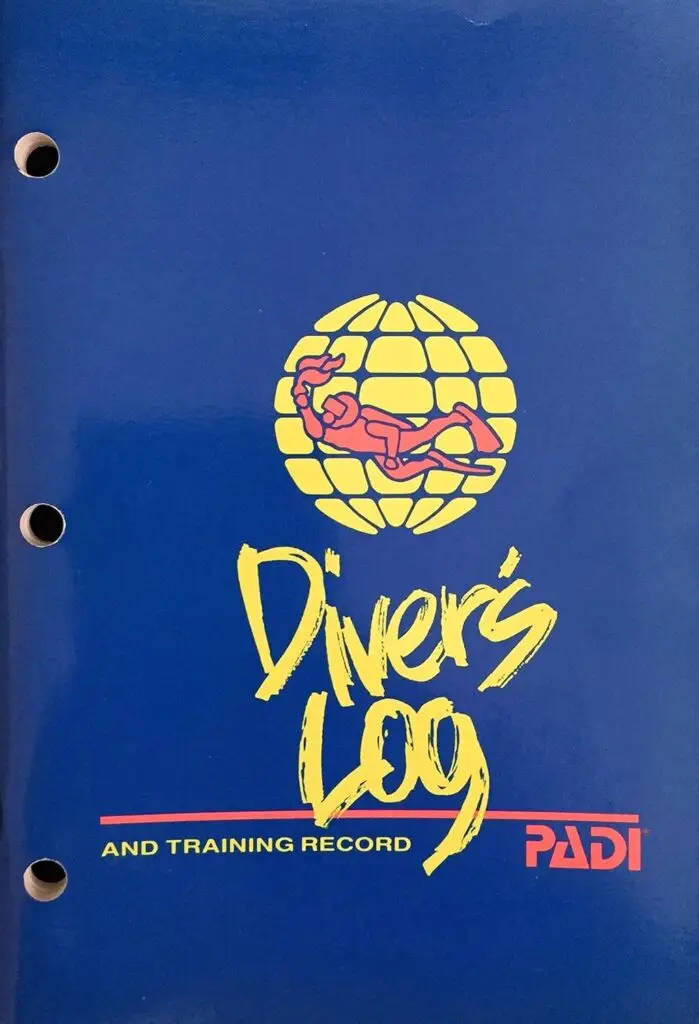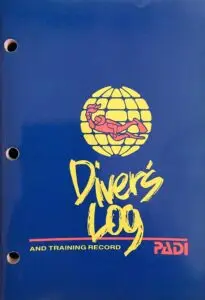Why this post?
I was browsing random social media site and a question got asked about Logbooks. The poster was asking very specifically about using a special notebook they had found as a paper logbook. Being kind of nostalgic myself this was something that appealed to me also. But I found myself pointing out all the reasons I moved away from paper logbooks for all but one scenario in the post. My goal here is to provide that thinking, and help you pick the right solution for your diving.
1. Introduction
When I first started diving, l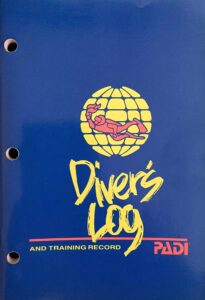 ogging my dives was one of the most exciting parts of the experience. Every entry felt like a badge of honor—proof of the underwater adventures I’d had and the skills I was building. I meticulously logged every dive, from my first underwater breath to reef explorations and boat dives. But as the dives started feeling repetitive, I lost the motivation to keep it up. Logging seemed unnecessary when every dive followed the same routine, and honestly, I just didn’t see the point anymore.
ogging my dives was one of the most exciting parts of the experience. Every entry felt like a badge of honor—proof of the underwater adventures I’d had and the skills I was building. I meticulously logged every dive, from my first underwater breath to reef explorations and boat dives. But as the dives started feeling repetitive, I lost the motivation to keep it up. Logging seemed unnecessary when every dive followed the same routine, and honestly, I just didn’t see the point anymore.
That all changed when I began pushing into more advanced diving. Suddenly, I needed to pay closer attention to my dive profiles—not just for safety but for planning future dives. Tracking gas mixes, depths, and decompression stops became critical as I ventured into technical diving. And when I transitioned into professional and rebreather diving, logging became a non-negotiable necessity. It wasn’t just about having a record of my dives—it was about liability, tracking equipment usage, and creating a reliable database to improve planning and safety.
In this dive logbook guide, I’ll share the evolution of my relationship with logging dives: why it matters, what to log, and how to do it effectively: why logging matters, what you should log, and how to do it effectively. Whether you’re logging dives for fun, safety, or professional reasons, I’ll also give insights into how I log as a rebreather diver. “Let’s dive into the details with this comprehensive dive logbook guide to create a log that works for you! 🌊🤿
2. Why Should You Log Your Dives? A Dive Logbook Guide Perspective
As this dive logbook guide will show, maintaining dive logs is more than a routine task; it’s a valuable practice for every diver. Whether you’re new to diving or a seasoned pro, keeping a record of your dives can enhance your safety, help you grow as a diver, and even prevent potential emergencies. Here’s why logging your dives is a game-changer:
Safety First
 A dive log can reveal patterns and issues that aren’t obvious during the dive itself. For example, I once had to cut a dive short on the Lady Luck Shipwreck, one of my favorite spots, because I ran low on air much earlier than usual. After revisiting my dive log and comparing it to similar profiles on that wreck, I noticed my gas consumption was significantly higher. This prompted me to inspect my gear and discover that it needed servicing—just in time to avoid a potential failure underwater. Without the logbook, I might have ignored the warning signs until it was too late.
A dive log can reveal patterns and issues that aren’t obvious during the dive itself. For example, I once had to cut a dive short on the Lady Luck Shipwreck, one of my favorite spots, because I ran low on air much earlier than usual. After revisiting my dive log and comparing it to similar profiles on that wreck, I noticed my gas consumption was significantly higher. This prompted me to inspect my gear and discover that it needed servicing—just in time to avoid a potential failure underwater. Without the logbook, I might have ignored the warning signs until it was too late.
Progress Tracking
Your dive log is like a diary of your underwater journey. It tracks your milestones, from your first open water dive to mastering advanced techniques. By reviewing your entries, you can see how far you’ve come and identify areas for improvement.
Training Requirements
Many certifications require proof of experience, like a certain number of dives or specific dive types. Your logbook is your ticket to qualifying for advanced courses and technical certifications.
Planning Future Dives
Your logbook is also a treasure trove of information for planning. Need to recall conditions, gas consumption, or specific gear setups for a favorite dive site? It’s all in your log.
Liability and Professionalism
For professional and technical divers, logging is a non-negotiable requirement. It’s crucial for liability purposes and ensuring safety when guiding others or conducting complex dives.
Dive logs aren’t just a formality—they’re a tool that grows with you, helping you dive smarter and safer while preserving the stories of your underwater adventures.
3. What Should You Log?
| Category | Details to Log | Why It’s Important |
|---|---|---|
| Dive Basics | – Dive number – Date and location – Time in/out – Starting/ending tank pressure | Tracks total dives, air consumption, and overall dive history. |
| Dive Profile | – Maximum depth – Average depth – Bottom time – Multi-level dive details | Helps analyze dive performance and plan future profiles. |
| Environmental Conditions | – Water type (salt/fresh) – Temperature (surface, mid-depth, bottom) – Visibility – Current/surge strength | Prepares for similar conditions and helps improve dive comfort and safety. |
| Equipment Details | – Wetsuit/drysuit thickness – Weights – Special gear (rebreathers, cameras, DPVs) | Tracks gear performance and adjustments for better buoyancy and functionality. |
| Activities & Observations | – Marine life spotted – Dive purpose (training, leisure, photography) – Notes on challenges or highlights | Adds personal memories and provides a purpose-driven record of your dive. |
| Technical Details | – Gas mixes (O2 %, He %, MOD) – Decompression stops (planned and actual) – Scrubber usage (rebreathers) | Essential for advanced, technical, or professional dives to ensure safety and track critical information. |
| Verification Signatures | – Instructor, dive master, or buddy signature | Validates dives for certifications or training requirements. |
4. Where Should You Log Your Dives?
Logging your dives is a personal choice, and where you log them depends on your preferences and diving needs. From traditional paper logbooks to modern digital apps, there are options for every diver. Here’s a breakdown to help you decide:
Physical Logbooks
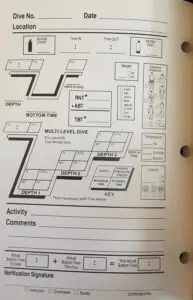 The classic choice for many divers, a physical logbook is a great way to record your dives by hand. It’s perfect for recreational divers who enjoy the tactile experience of writing down their adventures. Plus, they’re easy to bring along on dive trips and have instructors or buddies sign off on dives.
The classic choice for many divers, a physical logbook is a great way to record your dives by hand. It’s perfect for recreational divers who enjoy the tactile experience of writing down their adventures. Plus, they’re easy to bring along on dive trips and have instructors or buddies sign off on dives.
- Pros: Tangible, customizable, and no need for tech.
- Cons: Can be damaged, lost, or waterlogged.
Looking for a high-quality physical logbook? Check out these options on Amazon (Affiliate Link):
Digital Logbooks
For tech-savvy divers, digital logbooks provide a modern and convenient way to track your dives. Many dive computers now sync directly to apps, saving you time and effort. Digital logs also allow you to back up your data, search entries, and share logs with dive shops or instructors.
Examples:
- PADI App: includes a digital log book, helpful packing checklists, a guide to scuba diving hand signals and other valuable resources for divers – all for free! You can also use the app to access your PADI eCards and eLearning courses.


- Shearwater Cloud: Great for divers using Shearwater computers


- Subsurface: A free and versatile logging software for all levels of divers.
- PADI App: includes a digital log book, helpful packing checklists, a guide to scuba diving hand signals and other valuable resources for divers – all for free! You can also use the app to access your PADI eCards and eLearning courses.
Pros: Easy backups, detailed logging, and accessibility from anywhere.
Cons: Requires a device and may not feel as personal as handwriting logs.
Hybrid Approach
Can’t choose between physical and digital? Use both! Many divers prefer logging their adventures in a paper logbook for personal memories while keeping a detailed record in a digital app for safety and planning.
5. Specific Use Case: How I Log Dives with a Rebreather
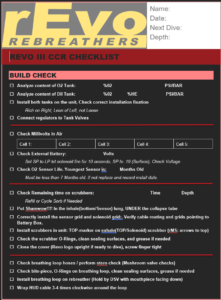 Pre-Dive Build Checklist:
Pre-Dive Build Checklist:
Before I even get to the dive site, I use a custom checklist to assemble and prepare my rebreather. This checklist includes:- Step-by-step instructions for building the rebreather.
- Calibration and safety checks, such as:
- Calculating remaining scrubber time.
- Comparing O2 sensor voltages.
- Checking battery voltages on all systems.
- Confirming the installation dates and functionality of all O2 sensors.
- Ensuring the unit holds a negative pressure test to confirm it is airtight.
I complete this checklist every time I build the rebreather, and I store it in a three-ring binder for future reference.
Pre-Dive Safety Check:
Once at the dive site, I run through a quick safety check to ensure the rebreather is functioning correctly before entering the water.Post-Dive Analysis:
After each dive, I download data from all three of my dive computers into my digital dive planning tool (I use Shearwater). This step is critical for:- Comparing profiles across all three computers to identify any discrepancies.
- Checking for potential failures, like O2 sensor or battery issues.
- Identifying common missteps, such as forgetting to switch the gas mix on a backup computer (a discrepancy that becomes clear when comparing profiles).
Once analyzed, I print out the dive profiles and include them in the binder alongside buddy information and any notable observations.
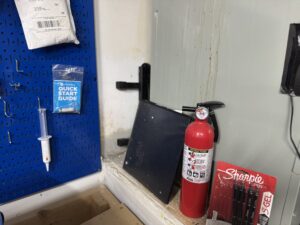 Comprehensive Record Keeping:
Comprehensive Record Keeping:
All this information—pre-dive checklists, post-dive data, and printed dive profiles—is stored in a three-ring binder. This binder is not just for my reference but also serves as a critical resource for my family in case of an emergency. If the worst were to happen, they know exactly where to find the details of my setup and dive history.
Why I Log My Rebreather Dives
Safety and Troubleshooting:
By logging every aspect of my dive, I can identify issues before they escalate. Comparing dive profiles and system data helps me catch failures in sensors, batteries, or procedures, ensuring my rebreather is always in top condition.Equipment Tracking:
Logging scrubber hours, O2 sensor replacements, and calibration data allows me to stay on top of maintenance schedules, preventing potential failures.Dive Planning:
Each log entry serves as a blueprint for future dives. Knowing how my gear performs under specific conditions helps me make adjustments and refine my setup.Liability and Emergency Preparedness:
As a professional and technical diver, maintaining detailed records is critical for liability purposes. My binder also acts as an emergency resource, giving my family access to vital information about my rebreather setup and dive history.
9. Final Thoughts
Logging your dives isn’t just about checking a box—it’s your passport to safer, smarter, and more memorable underwater adventures. Whether you’re a beginner jotting down your first few dives or an advanced rebreather diver meticulously tracking every detail, a well-maintained dive log can transform the way you dive. From catching equipment issues before they become problems to reflecting on your progress and preserving unforgettable memories, your logbook is a powerful tool for growth, safety, and storytelling. So, why wait? Start—or restart—your dive logging journey today and let every entry bring you closer to becoming the diver you’ve always dreamed of being. 🌊🤿

